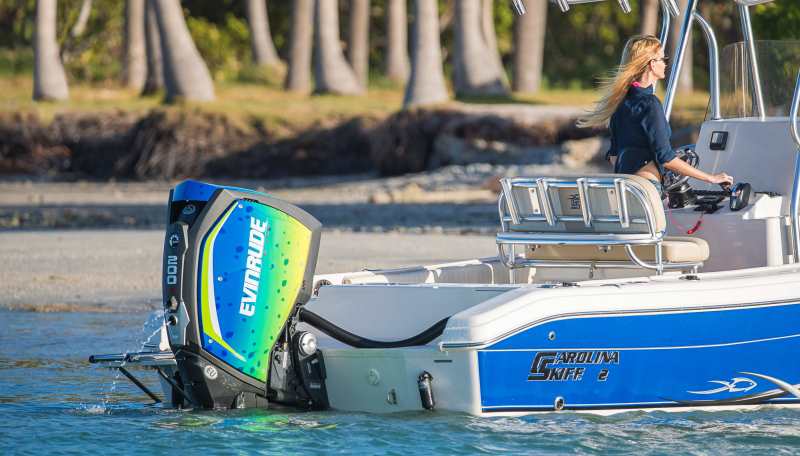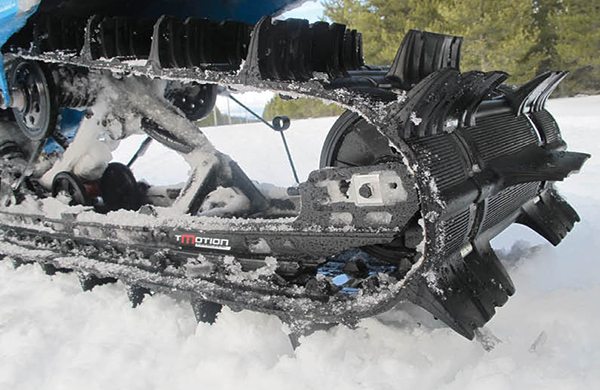Remember the “good-old-days” of mixing your gas and oil every single time you fueled up the sled? Even if your history of the sport doesn’t go back that far, you probably remember the sleds built as recently as 15 years ago that burned far more oil than modern sleds, and as a result smoked and smelled a whole lot more than the new stuff. Yes, sleds have gotten better in many different ways, and one cause is the advent of injected oil systems, according to Snow Goer’s own T.J. Krob, author of the Snowmobile Science column
In every issue his column provides a scientific or engineering background on something related to snowmobiles. To regularly read TJ’s column and many other reviews, comparisons and features in each issue, subscribe to Snow Goer today!
The Marvels of Modern Lubrication
A Detailed Look At The Slippery Stuff
By T.J. Krob
Lube it up! Engine oil has a long history of development, has been researched for its medicinal benefits and can range from thick to thin in viscosity (a fluid’s resistance to flow) to suit many diverse applications. In short, engine oil is a necessary lubricant which, regardless of its internal composition, is intended to decrease the friction and heat developed as pistons, bearings and valves flutter, twist or spin rapidly to make our engines run. If you keep your engine cared for with quality oil in the proper ratio, it’ll run for a long time.
Many of us can remember the days of pre-mixing gas and oil to run through our sleds. This petroleum hydrocarbon-based stuff had a noticeable smell to it, had to be opened with a can opener or the classic “jam a screwdriver through the lid” method and was often recommended to run at a 20:1 gas-to-oil mix ratio. We’d pour the 32-ounce jug into a 5-gallon can, shake it around and de-posit the mixed fuel/oil blend into the awaiting gas tank.

The engine fed by this type of fixed fuel/oil mixture employed the two-stroke delivery method where a blend of air, two-cycle oil and fuel was ingested into a sealed crankcase prior to being launched up through the transfer ports for combustion. The oil contained in the mixture kept the crank/connecting rod bearings lubricated sufficiently enough.
If the fuel/oil mixture contained more oil than specified, this could cause spark plugs to foul, carbon deposits to build and could produce a poor running engine. Going too rich with the oil volume could also lean-out the fuel in the mixture, causing potential engine seizure if carburetor jetting wasn’t adjusted. If the fuel/oil mixture value contained less oil than specified, pistons could be scored as they rubbed against the cylinder wall creating excessive friction/heat, bearings could fail and engine damage could result.
Progressing in time, not only did the quality of oils offered improve, but efforts were also made to increase the precision of the delivery methods of the necessary lubrication fluids.
A system called “oil injection” was implemented into snowmobiles starting in the 1960s to eliminate the dependency on mixing fuel with oil. A reservoir solely dedicated to oil was mounted in the chassis and a line fed into an inlet side of the pump; this pump was driven by a gear inside the engine case and oil carried through an outlet line ran to small injectors placed in the intake tract to mix with incoming fuel/air, lubricating internal bearings as it travelled along the way to combustion.
Being driven by a gear inside the engine meant that it was dependent on RPM, with more oil being pumped as the pump spun faster. A metering valve was connected to the throttle and could be opened to permit more oil flow as a driver demand increased, creating a semi dual-variable oiling system. At low RPM, the pump spins slower to de-liver less oil and also the metering valve is closed down on the orifice to restrict flow, dropping the fuel/oil ratio to 70:1 or more.
The opposite is true for high RPM conditions when a combination of the pump spinning faster and the metering valve being opened could deliver fuel/oil ratios in the 20:1 range to increase lubrication. This guaranteed more precise control over when the engine needs added lubrication during periods of extreme operations, yet can scale delivery of oil and fuel back during periods of low RPM/demand. Many arguments were spawned during this time from those who thought that these new spinning parts were more prone to failure.
Jump over the fence to how oil quality was changing during this same period and you fall smack into the middle of SAE standards, multi-grade weight oils, API control and the advent of additives to reduce buildup inside an engine.

By the 1980s and ’90s the Environmental Protection Agency (EPA) was gearing up to penalize any manufacturer providing oils outside the bounds of its “clean” determination. The EPA wanted cleaner-burning fossil fuels, while we horsepower-junkies craved the raw power of a naturally aspirated, fuel-gobbling, two-stroke engine.
Increased attention toward the phosphamide class of oil construction, synthetics blends and bio-based oil provided platforms for multiple new-comers to convey to the sled lubrication category the new future of lubrication products; their claims of lower pour points (the temperature at which the oil stops flowing like a liquid), cleaning detergents and altered ratings factored into brand recognition for sled owners finding new alternatives to their classic prescribed lubricants. It was indeed quite the trying time to be a petroleum lover.
The increased quality of oils burning cleaner and maintaining slicker engine components for healthier engine life ran a steady course of development until the idea of “where” oil enters the system was re-thought.
The biggest breakthrough – for both snowmobile and also outboards and personal watercraft – was Bombardier Recreational Product’s E-TEC system. It came to snowmobiling for model year 2009 and immediately employed methods to curtail oil usage by having the Engine Control Module (ECM), an electronic pump and targeted oil injectors precisely control where and when lubrication was added to specific locations in the engine. It was a break-through not just for Ski-Doo but for the whole two-stroke engine category – proving to EPA regulators that a two-stroke engine could meet its increasingly stringent emissions standards.
Polaris’ Cleanfire Injection (CFI) engines also targeted oil dispersal, and more recently the Arctic Cat Dual-Stage Injection (DSI) engine released in 2014 brought life to a new theory of combining the lubricating oil in the fuel entering the fuel injectors. Instead of using an RPM-driven pump with an orifice valve to control outflow, an electronic pump was installed in the bottom of the oil tank that was controlled by the ECM. The ECM can tell the pump when to pump, how much to pump and thus how much to deliver to the system each time a spark plug fi res.
The Arctic Cat DSI method uses an electronic oil pump to feed oil into the high-pressure fuel injection line prior to the mixture entering the throttle body. From here, the precisely calculated fuel/oil mixture is carried into the cylinder via the fuel injector spraying burnable fuels while also lubricating valuable engine bearings directly. Along with the oil being delivered via the fuel injectors, it is also injected through the intake flanges to provide a second point of targeted lubrication. This provided calibration engineers the freedom to say how many volts were fl uttered to the oil pump and at what point the pump was given full gusto.
Jump ahead another chapter and we’ve entered a whole new era with some seriously targeted oiling and dispersion methodologies.
The 2017 Ski-Doo 850 E-TEC engine now receives pressurized-oil directed precisely at the important bearing components to eliminate rolling resistance without waste, resulting in a clean mixture meeting EPA guidelines. Plasma coatings and the intelligent design of delivering oil to the engine components most prone to failure is a key goal of the 850 E-TEC and the metallic properties of this two-stroke enable it to live a long life with little oiling.
Take a gander at the bottom end of a new Ski-Doo and you’ll see oil injectors lubing the inner crank bearings, but also a positive pressured system of cavities housed by the two-piece forged crankshaft that delivers oil directly to the bearings in the middle of the crankshaft, then also slings oil to the lower rod bearings, leaches to the upper rod bearings and even coats the cylinder wall.
Our quick-revving, high-horsepower engines demand tight tolerances melded with smooth lubrication. So, should pre-mixers reign supreme since they know their engine will always be lubed – be it a little rich at low load? Or is a mini rod-controlled pump going to be the best option to mix oil into the fuel most consistently? Is an automotive-derived lubrication system the ideal one to employ? Or perhaps the new kids are onto something, mixing the oil into the fuel and then spraying a combination mix into the engine? The debate of which method is best will likely continue for years to come. The clearest winners are the riders who get to enjoy the labors of each advancement.



